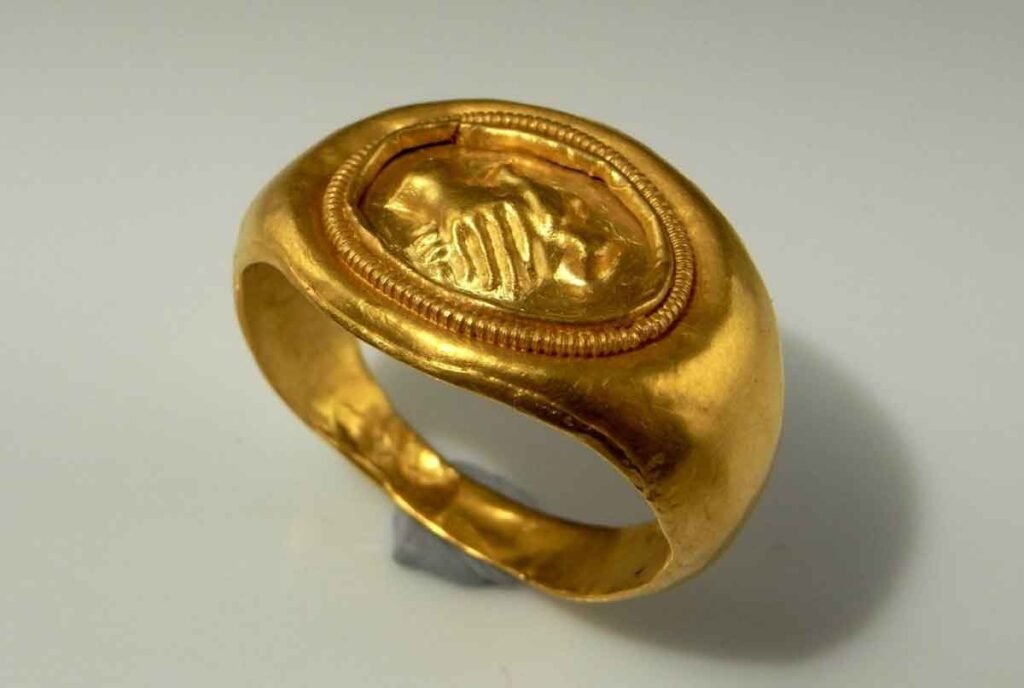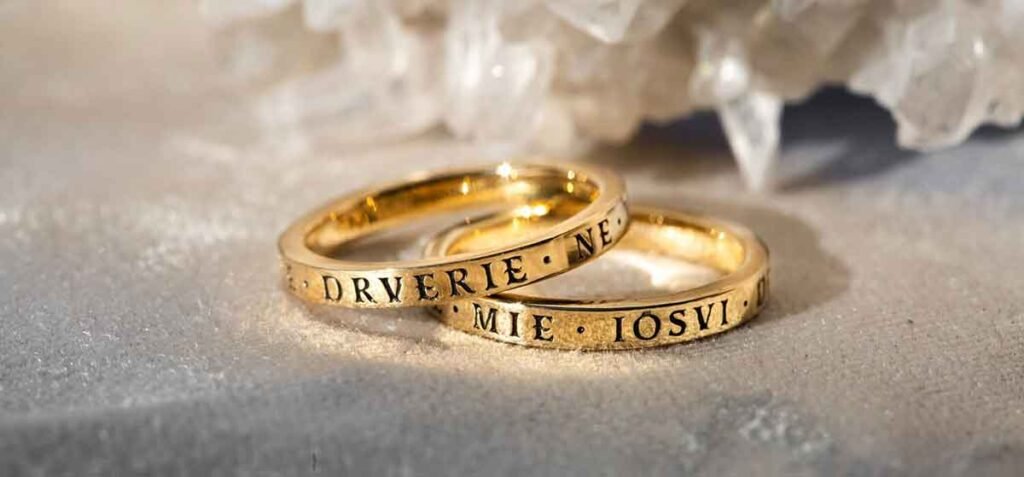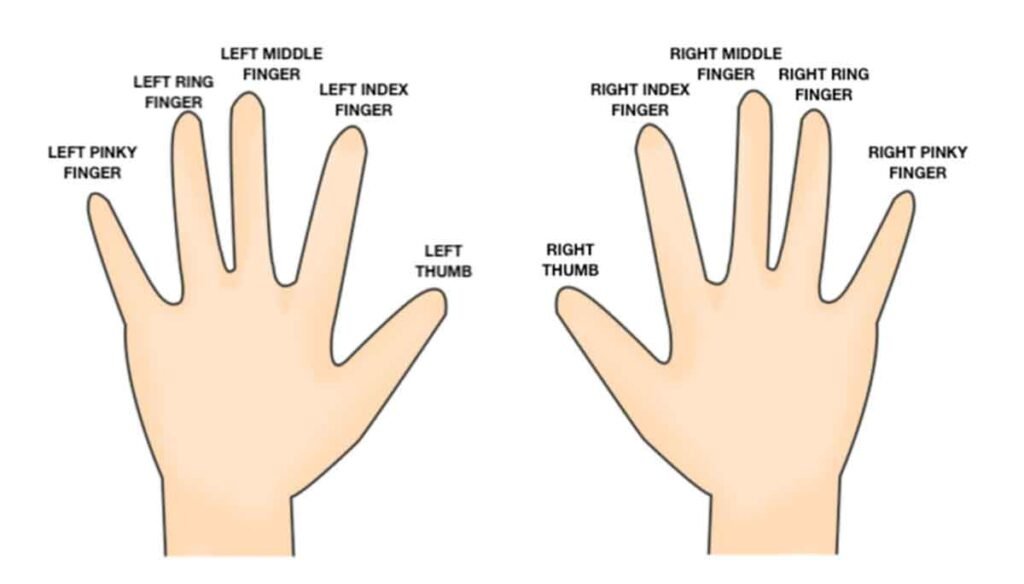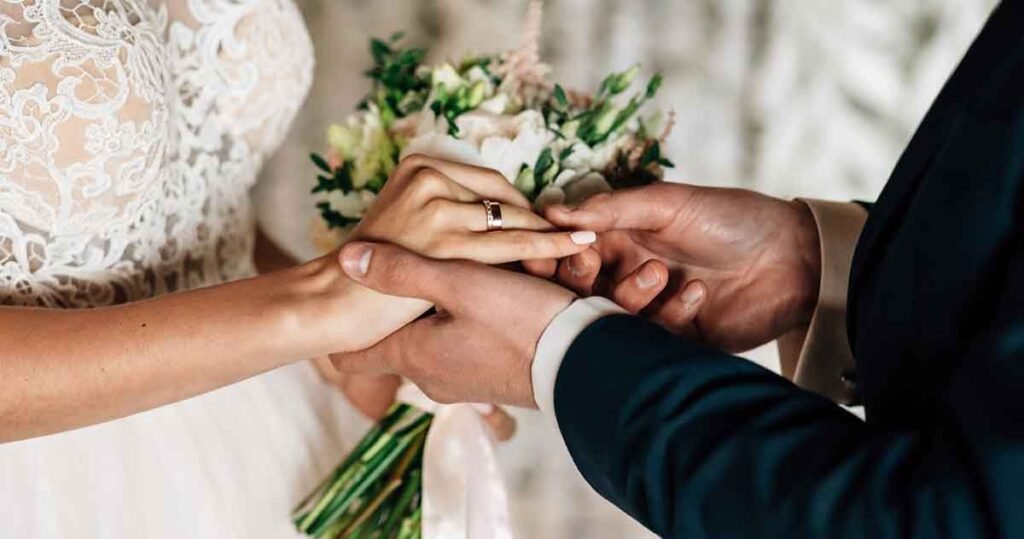Wearing a wedding ring on right hand is not something you see every day. But is it the right and proper way of wearing it as a culmination of the right up to the wedding party?
This question might be a ‘no-brainer’ as wedding rings are traditionally worn on the left hand.
Well, tradition and history say otherwise—even if they are often at odds with each other. However, to get to the bottom of this intriguing topic requires turning back a few pages of the Book of Time to the era of the Pharaohs.
Wedding Ring on the Right Hand
Does wearing your wedding ring on right hand break tradition? We’ll have to go back down in history to find out if people ever practiced this seemingly odd way to wield this wedding accessory. Read on to find out more.
History of Wedding Rings
Historical records show that as early as 3,000 or 5,000 years ago, ancient Egyptian couples exchanged a kind of wedding ring, pretty much different from the one in this Tacori review—the precursor of what we have today.
The wedding rings of ancient Egypt were made from woven biodegradable materials like hemp, reed, rushes, and sedges. They placed their rings on the fourth finger of the left hand as the Egyptians believed there was a ‘vein of love’ in the finger that ran directly to the heart.
However, these rings easily degraded after a short time of wearing. This led to the introduction of more durable materials like leather, stone, or ivory wedding rings. These materials also became a status symbol of wealth and power.
Then Alexander the Great invaded Egypt, ushering in the Greeks who adopted the Egyptian tradition. They gave rings to their lovers to express devotion. Most of these rings depicted Eros or Cupid—both symbols of love.
The Roman Era
Then around 30 BCE, the Romans invaded Egypt, bringing with them their own culture and ways of doing things. But they adopted the Egyptian wedding ring tradition, except that the Romans used metals like iron and copper.
The Roman wedding rings sometimes carried motifs symbolizing the wife as being in control of the house. By the 2nd century CE, most rings were historically fashioned from gold—and better ring designs like the fede ring, a ring design in which two hands meet and are clasped in friendship, love, or betrothal, became fashionable.

From then on, gold wedding rings got more luxurious in style, flaunting the giver’s wealth. It is also during this time that gemstones like carnelian, garnet, or amethyst, or some other birthstones in history, started appearing on rings. And the Romans personalized their rings by carving their portraits into them.
The Medieval Period
The Medieval Period (500 to 1,500 CE) saw the further evolution of the wedding ring. Medieval Europeans started using gemstones on their wedding rings. They used rubies, to signify passion, sapphire, just like the piece in this David Porter review, to symbolize the heavens, and diamonds to symbolize steadfast strength.
The Roman tradition with wedding rings still manifested during this period but with a twist—aside from fede rings, Posie rings—gold finger rings with short inscriptions on their surface—came into vogue.

This period, around 1600, also gave the Roman fede rings some facelift. From it came the Claddagh Ring (a ring showing a pair of hands holding a heart) and the Gimmel Rings (a ring with 2-3 interlocking bands which, when worn together, created a single ring).

The Gimmel rings have their own tradition. Days before the wedding, the bride and groom would wear one band each. Then, during the ceremony, it would all be assembled together as one ring to be given to the bride to mark the union.
Diamond wedding rings and women
Diamonds have been known since the 100s CE, but the oldest known diamond jewelry dates back to 300 BCE. Diamonds then were uncut and were known for their hardness, not brilliance.

The earliest diamond wedding ring dates back to the late 1300s or early 1400s. It was owned by an English widow and documented in her will.
As described by Italian socialites, “Two will, two hearts, two passions are bonded in one marriage by a diamond.
The first and most famous diamond engagement ring was given by the Archduke Maximilian of Austria, to Mary of Burgundy in 1477.
Wedding rings in men
Although the Church promoted in past centuries the exchange of wedding rings to keep men faithful, it never caught on. It took a world war to make men do it.
During WWII, American and European soldiers wore wedding rings to remind them of their beloved back home. This tradition held fast up through the Korean war. Since then, it has become a practice for men to wear wedding rings as well.
The origin of engagement and wedding rings
The Medieval period also created a change when it came to wedding rings.
In Medieval England, getting married was pretty simple. All a couple had to do was to agree to live together, then offered each other a gift called a ‘wed.’ And more often than not, this wed was a ring.
This was the norm until the 8th century.
However, it caused much confusion. Since there were no witnesses, clergy, or otherwise, a couple who decided to un-couple would simply deny that a ‘wedding’ took place.
To solve such confusion, the Church, sometime in the 12th century, made marriage a sacrament and established the church ceremony. This fiat declared that no man can place a ring on a woman’s hand unless he intends to marry her. Out of this, too, was the practice of giving two rings—the engagement ring, and the church-sanctioned wedding ring.
However, the rings back then are far different even from the vintage engagement rings that we know today.
Who Wears Their Wedding Ring on the Right Hand?
Historically, the Romans wore their wedding rings on the right hand because of their belief that the left hand was thought to be unreliable, untrustworthy, and even sinister. This, however, did not stop some Romans from wearing wedding rings on the right hand as they considered it a sign of honor and trust.
What about these days?
There are no hard and fast rules on what finger the wedding ring is worn. Traditionally, the engagement ring, if worn on the left, is transferred to the right—above the wedding ring after the marriage has been solemnized. But the woman can have it her own way.
And what does it mean when a man wears a wedding ring on right hand?
How do other countries do it?
What Does a Ring on the Right Ring Finger Mean?
Left and right hand nomenclatures

- Tradition and cultural differences
- Symbol of financial independence
- It is an heirloom
- For comfort
To elaborate on each…
Tradition/cultural differences
In the United States the wedding ring is traditionally placed on the left hand—so is the engagement ring. After the ceremony, the engagement ring is removed and place above the wedding ring.
Some eastern cultures opt to wear their wedding rings on their right hand. Muslim women may wear a wedding ring on any finger they choose, but men are not allowed to wear wedding rings.
The Chinese also don’t wear wedding rings. And based on religion, the Seventh Day Adventists also don’t wear wedding rings.
Symbol of financial independence
In the US, roughly 57% of the total workforce are women. They earn and support themselves and/or their families. That gives them a sense of financial independence not experienced by women in previous generations.
That sense of independence also opens up options contrary to traditions handed down to them by their parents—these include where to wear their wedding rings. Just to make a statement, they wear it on the right hand.
It is an heirloom of financial independence
Some women have the great fortune of inheriting a wedding ring from their parents or grandparents. They are placed on the right hand to give it prominence.
For comfort
We are in a world that is moving faster than we can think. Traditions are demolished, giving way to real-time ways of doing things; being practical, and simple is the name of the game these days.
Things previously held and clung to as ‘gospel truth have been discarded. To be replaced by real-time activities. Traditions are passé.
Now, most people don’t have the luxury of sitting down comfortably reading their papers while sipping hot coffee. They are constantly on the move, catching the latest from their smartphones or their tablets. Things requiring immediate attention are constantly swirling in their minds.
As a corollary to that, on which hand should their wedding ring be is the least of their concerns. That’s a very petty thing to worry about. There’s the sales quota to meet or their promotions, or mortgage payments to attend to, among other things.
Couples these days look at wedding rings as rings that can go either on the left or right hand. What has remained steadfast, and thankfully so, is its symbolism.
Whether left or right, the wedding ring is still is an emblem of love through time; it is a symbol of devotion between two people who are in love with each other. A wedding ring is the sign of a promise or contract between a couple and their two families—regardless of which hand you wear it on.
We hope that you’ve learned a thing or two about wearing a wedding ring on the right hand. Now, if you’re on the market for a wedding ring but don’t know where to start, check out our guide “Ring Shopping: What You Need To Remember For Wedding Rings.”
